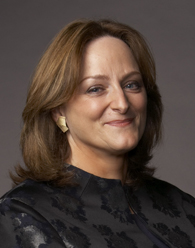VISIT OF DR. CLAUDIA MEGAN URRY (DEC 2 TO 5, 2014)
2014-15 ANTOINETTE DE VAUCOULEURS MEDALIST
Dr. Claudia Megan Urry is the Israel Munson Professor of Physics and Astronomy at Yale University, the Director of the Yale Center of Astronomy & Astrophysics, and the President of the American Astronomical Society (AAS). During her visit to UT, she is receiving the prestigious Antoinette de Vaucouleurs Memorial Lectureship and Medal awarded by the UT Astronomy Department for outstanding scientific achievement. Dr Urry has published over 200 refereed research articles on supermassive black holes and authored over 30 book chapters and invited review papers. She is a Fellow of the American Academy of Arts and Sciences, the American Physical Society, and American Women in Science. Dr. Urry has played key roles on science policy committees, including the American Association for the Advancement of Science and the Public Policy Committee of both the American Physical Society and the AAS. She is a strong advocate for broader participation of women in science and has twice led the U.S. Delegation to the IUPAP International Conference on Women in Physics. She is a frequent contributor to CNN, the New York Times and other media outlets.
|
Tues., Dec. 2, 2014 |
|
|
3:00 pm |
Colloquium Reception (RLM 15.216A) |
|
3:30-4:45 |
de Vaucouleurs Medal Award and Lecture (RLM 15.216B) THE GROWTH OF SUPERMASSIVE BLACK HOLES and GALAXY EVOLUTION |
|
|
Multiwavelength surveys like GOODS and COSMOS indicate that most actively growing black holes are heavily obscured, and this fraction increases in the young Universe and in lower luminosity AGN. Most black holes grow in moderate luminosity AGN, which dominate the X-ray“background,” rather than in luminous quasars. In the peak epoch of black hole growth, at z~1-3, such AGN are hosted in galaxies with significant disks, and thus cannot have undergone a recent major merger. Using morphological classifications from Galaxy Zoo (at z~0), we identify two distinct modes of galaxy evolution, with mergers and AGN feedback affecting only a minority. Mergers are more important at the high luminosity end, i.e., in quasars. Using a large-area hard X-ray survey (“Stripe 82X”), which finds quasars even in obscured systems, we are starting to fill in the last missing piece of a complete census of black hole growth across the luminous Universe. |
|
Wed., Dec. 3, 2014 |
|
|
Noon-1:00 |
OUTLINE OF MAJOR AAS INITIATIVES and OPEN DISCUSSION (RLM 15.216B) |
|
4:00-5:00 |
Public Lecture (ECJ 1.202) BLACK HOLES, GALAXIES and THE EVOLUTION OF THE UNIVERSE: AN OBSERVER'S VIEW |
|
|
Black holes form in the young Universe and, over the next 13 billion years or so, accrete enormous amounts of matter from the surrounding galaxy. By the present time, a black hole and its host galaxy have grown in mass by factors of a million or more, roughly in lockstep. In this talk, I will first give several alternative descriptions of what a black hole is, then explain how recent multiwavelength surveys have allowed us to take a census of black hole growth across cosmic time. I conclude with the big picture: the evolution of the universe over the last 13 billion years, as indicated by computer simulations, and future prospects for observing black hole growth and mergers across the cosmos. |
|
Thurs., Dec. 4, 2014 |
|
|
4:00-5:00 |
Public Lecture - UT College of Natural Sciences, Women in Science Lecture (NHB 1.720) WHY SO FEW? THE DEARTH OF WOMEN IN SCIENCE |
|
|
Women continue to be underrepresented in STEM fields (Science, Technology, Engineering, and Mathematics), and the gender imbalance is particularly large in physics, where fewer than 20% of college physics majors are women and only 10% of physics faculty are women. Interestingly, astronomy requires more or less the same skills as physics but has roughly double the percentages of women at all levels, indicating the influence of factors beyond scientific/quantitative talent. Decades of social science research suggest the dearth of women is due in large part to lower expectations and evaluations of women as leaders, thinkers, do-ers. I discuss the experimental data and outline steps that can be taken to mitigate obstacles to equal participation, full utilization of available talent being critical to the health of STEM professions. |

Dr. Megan Urry